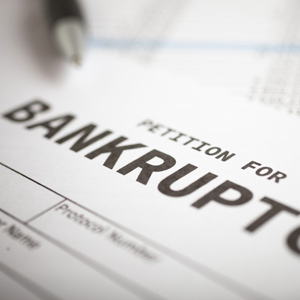Debt and Bankruptcy

These are not uplifting topics. However, business owners should have a working knowledge of them, primarily to avoid an inadvertent use of personal funds that would otherwise have bankruptcy protection.
According to recent statistics provided by the American Bankruptcy Institute, the State of Georgia has the highest unemployment rate in the United States. Additionally, the Bankruptcy Court for the 11th District, which includes Alabama, Florida, and Georgia, saw over 160,000 bankruptcy filings in 2013. Statistically, 80% of all new businesses fail. With so much on the line, it is important to know how individuals can move forward in the most efficient manner in the event a business venture fails. There are some ways that are better than others to handle the loans that may have been taken to start the business, the credit card debts that were incurred to keep a business going, and the harassing phone calls from vendors clamoring to get paid. Businesses also need to be aware of how to protect the assets they have left.
Although most people shudder at the thought of filing for bankruptcy, it often is the best option for someone in this situation. Bankruptcy was created to eliminate debtor’s prison and to provide individuals and businesses with a “fresh start.” It protects assets, such as retirement funds, homes, automobiles, tools of the trade, and bank accounts. There are monetary limits, known as exemptions, to the protections afforded to these assets. In addition to protecting assets from creditors, filing a bankruptcy petition creates an automatic stay that stops lawsuits, foreclosures, and garnishments, and allows individuals and companies to discharge certain debts, including judgments. In qualifying situations, one can even discharge tax debt and strip a second mortgage lien off a personal residence. A chapter 11 bankruptcy allows companies that want to stay in business to continue to operate even after the bankruptcy petition is filed. There are some protections for creditors of the company, so for 90 days before filing a bankruptcy, companies cannot prefer certain vendors over others or pay accounts out of order. These types of transfers are considered preferential and will be reversed by a bankruptcy trustee.
Unfortunately, most people don’t want to file for bankruptcy protection because they are either embarrassed to admit that they are having financial difficulty or they are afraid that they will lose everything. We have known many individuals who owned businesses that have just waited too long. In many situations, unless the business is still operating or has assets that need to be liquidated, it is not the business but the individual who guaranteed loans and extended their personal credit to keep the failed business afloat that needs the bankruptcy protection.
Business owners are optimistic by nature and in order to keep their business alive will often dip into their retirement funds to maintain minimum payments on credit cards and hold other creditors at bay. The problem with this solution is that qualified retirement funds are protected in bankruptcy. If business owners deplete their retirement accounts to sustain a failing business, the business may still fail and they will be left with no retirement account, a tax bill as a result of the liquidation, and no way to generate new revenue.
If you have a business that has failed or is failing and you are overwhelmed with debt, discuss the bankruptcy option. A bankruptcy professional or lawyer can evaluate your debts to help you determine which debts are dischargeable and which debts aren’t. In addition, they will help you to evaluate your assets and how they can be protected if you file for bankruptcy. Before you liquidate your retirement account to pay for your business debts, you should consider your options. You may find that you are able to discharge most of your debt and keep your retirement funds intact until you retire. The “fresh start” provided by a bankruptcy discharge allows business owners to move forward with significantly less debt while maintaining most of their assets.
[Business Insights is hosted by the Law Firm of Kumar, Prabhu,
Patel & Banerjee, LLC.
Gai Lynn McCarthy is a counsel attorney to KPPB
and specializes in bankruptcies and workouts.
Disclaimer: This article is for general information purposes only, and does not constitute legal, tax, or other professional advice.]
Enjoyed reading Khabar magazine? Subscribe to Khabar and get a full digital copy of this Indian-American community magazine.
blog comments powered by Disqus










